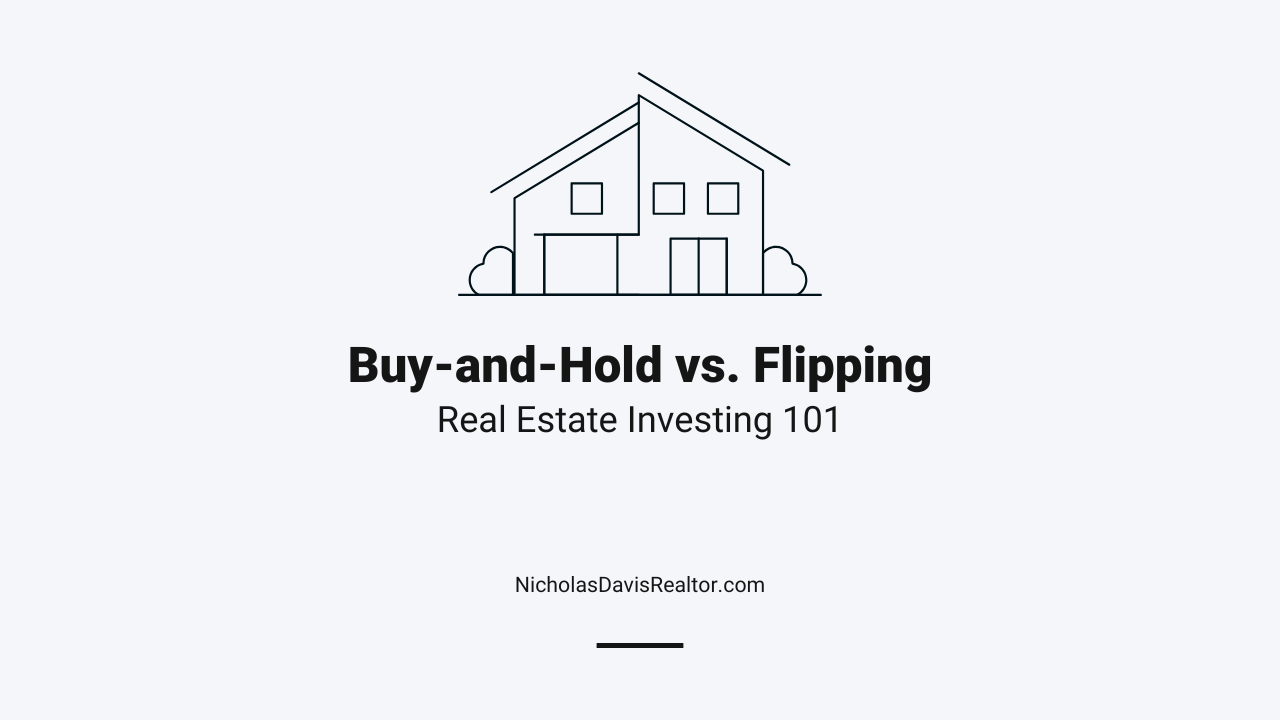Introduction
There’s no shortage of ways to invest in real estate, but two strategies dominate the conversation: flipping and buy-and-hold. On the surface, they can both lead to profit—but the journey, mindset, and outcomes couldn’t be more different.
One offers fast, high-risk returns. The other, long-term stability and slow-burn wealth. Let’s explore the difference between the two, and more importantly, which path might be right for you.
The Flipper’s Mindset
Flipping is for the investor who sees potential in what others overlook. It’s about timing, vision, and execution. A flipper looks at a property and sees not what it is—but what it could be with the right improvements.
The goal? Buy low, renovate smart, and sell high. In many cases, this all happens in less than a year.
What Makes Flipping Attractive
- Speed: You don’t need to wait years to see a return. A successful flip can turn profit in a matter of months.
- Capital Creation: Many investors flip to build cash for future long-term investments.
- Creative Control: You’re in charge of the transformation—everything from layout to finishes.
But flipping is far from passive. It’s a business—often a full-time job. Renovation overruns, market slowdowns, and buyer delays can eat into profits fast. And every new project means starting from scratch.
The Buy-and-Hold Investor
This strategy is about patience and long-term positioning. You’re not chasing a lump-sum payday—you’re building equity, collecting rent, and letting appreciation and loan paydown work in your favor over time.
Buy-and-hold is less about short-term wins and more about consistency, cash flow, and wealth that compounds year over year.
Why Buy-and-Hold Builds Wealth
- Monthly Income: Rent checks provide recurring revenue that can cover expenses and create surplus.
- Appreciation: As property values rise over time, so does your net worth.
- Tax Benefits: From depreciation to 1031 exchanges, long-term holders have a powerful tax toolkit.
- Equity Growth: Every mortgage payment made by a tenant is helping build your wealth.
Of course, this strategy comes with responsibilities. Property management, maintenance, and tenant turnover are part of the job. But over time, the returns often outweigh the headaches.
So Which One is Better?
It depends entirely on your goals.
If you want fast capital, flipping might be the way to go. It’s high-risk, high-reward—but if you have a strong renovation team and sharp market instincts, it can deliver quick wins.
If you’re thinking long term, buying and holding gives you a foundation of wealth you can build on for decades. It’s slow, steady, and one of the most proven paths to financial independence.
Can You Do Both?
Absolutely. In fact, many successful investors flip a few houses a year to generate cash—then use that cash to fund down payments on buy-and-hold properties.
Think of flipping as the fuel, and buy-and-hold as the engine.
Final Thoughts
Flipping and buying and holding aren’t just investment strategies—they’re philosophies. One bets on speed and timing; the other bets on time and compounding. You don’t have to choose just one forever. But knowing when and why to use each can make all the difference in your real estate journey.
Choose the one that matches your season of life, your risk tolerance, and your vision for wealth—and then go all in.




